Scissor Lifts: Versatile Tools for Elevated Efficiency
Date Posted:22 July 2024
Scissor lifts are indispensable tools that enhance efficiency, safety, and accessibility in various industries and operational environments. Whether used for construction projects, maintenance tasks, inventory management, or event setups, scissor lifts pr
Scissor lifts are essential equipment widely used in various industries for lifting workers, materials, and equipment to elevated heights safely and efficiently. These hydraulic-powered platforms offer versatile solutions for tasks such as maintenance, construction, warehousing, and more. This article explores the functionality, types, benefits, applications, and considerations for using scissor lifts in different operational environments.
Functionality and Types of Scissor Lifts
1. Hydraulic Mechanism: Scissor lifts operate on a hydraulic mechanism that extends and retracts a crisscrossing set of supports (the scissor mechanism). This allows for smooth vertical lifting and lowering of the platform.
2. Electric vs. Diesel: Scissor lifts can be powered by electric motors for indoor use or diesel engines for outdoor applications where greater mobility and power are required. Electric lifts are favored for their quieter operation and zero emissions, making them suitable for indoor environments.
3. Rough Terrain vs. Indoor: Rough terrain scissor lifts are equipped with larger, more robust tires and sturdy frames to navigate uneven ground and outdoor terrain. Indoor scissor lifts are compact and maneuverable, designed for use on flat, smooth surfaces within warehouses or manufacturing facilities.
4. Platform Size and Capacity: Scissor lifts come in various platform sizes and weight capacities to accommodate different loads and numbers of workers. Larger platforms are suitable for carrying multiple workers or heavy equipment, while smaller platforms offer more maneuverability in tight spaces.
5. Specialized Features: Some scissor lifts are equipped with additional features such as extendable platforms, tilt functions, and integrated tool trays for enhanced versatility and functionality in specific applications.
Benefits of Scissor Lifts
1. Enhanced Safety: Scissor lifts provide a stable platform with guardrails and safety features to protect workers at elevated heights. Safety interlocks, emergency stop buttons, and overload sensors ensure safe operation and compliance with workplace safety standards.
2. Increased Efficiency: By eliminating the need for ladders or scaffolding, scissor lifts streamline tasks such as maintenance, installation, and inventory management. Workers can access elevated areas quickly and safely, reducing downtime and improving productivity.
3. Versatility in Applications: Scissor lifts are used across various industries for tasks such as building maintenance, installation of overhead fixtures, warehouse inventory management, and event setup. Their adaptability makes them indispensable tools in diverse operational environments.
4. Cost-effectiveness: Compared to alternative methods such as scaffolding or crane rentals, scissor lifts offer a cost-effective solution for accessing elevated work areas. They require less setup time and labor, contributing to overall project savings.
5. Environmental Considerations: Electric scissor lifts contribute to environmental sustainability by producing zero emissions during operation. They are suitable for indoor use where air quality and noise levels must be controlled, aligning with green building and workplace safety initiatives.
Applications of Scissor Lifts
1. Construction and Building Maintenance: In the construction industry, scissor lifts are used for tasks such as installing windows, painting facades, and conducting structural inspections. They provide safe access to elevated work areas without the need for scaffolding.
2. Warehousing and Logistics: Scissor lifts streamline inventory management in warehouses by facilitating access to high shelving and storage areas. They improve picking efficiency, stock rotation, and inventory control processes.
3. Manufacturing and Assembly: In manufacturing plants, scissor lifts assist in assembly lines, equipment maintenance, and production processes. They enable ergonomic positioning of workers and equipment, enhancing workflow efficiency and safety.
4. Retail and Event Management: Scissor lifts are employed in retail settings for setting up displays, changing signage, and conducting store renovations. In event management, they assist with stage setup, lighting installation, and venue preparation.
5. Facilities Management: Facilities managers use scissor lifts for routine maintenance tasks such as HVAC system inspections, ceiling repairs, and cleaning high windows. They ensure efficient building upkeep and compliance with safety regulations.
Considerations for choosing Scissor Lifts
When selecting scissor lifts for specific applications, consider the following factors:
1. Height and Reach Requirements: Determine the maximum height and reach needed to access elevated work areas or equipment. Choose scissor lifts with sufficient platform height and extension capabilities to meet project specifications.
2. Terrain and Environment: Consider the operational environment, including indoor or outdoor use, smooth or rough terrain, and space constraints. Select scissor lifts with appropriate tire types, platform sizes, and power sources to navigate specific work conditions.
3. Load Capacity: Evaluate the weight capacity required to lift personnel, tools, and materials safely. Verify that the scissor lift's platform size and weight rating accommodate the heaviest loads and number of workers expected during operations.
4. Safety Features and Compliance: Prioritize scissor lifts equipped with safety features such as guardrails, emergency lowering systems, and stability controls. Ensure compliance with workplace safety regulations and standards for elevated work platforms.
5. Maintenance and Service Support: Choose scissor lifts from reputable manufacturers with reliable maintenance and service support. Regular inspections, operator training, and preventive maintenance programs are essential for safe and efficient scissor lift operation.
Scissor lifts are indispensable tools that enhance efficiency, safety, and accessibility in various industries and operational environments. Whether used for construction projects, maintenance tasks, inventory management, or event setups, scissor lifts provide safe and efficient access to elevated work areas. By investing in scissor lifts tailored to specific height requirements, load capacities, and environmental conditions, businesses can optimize workflow processes, improve worker productivity, and ensure compliance with safety regulations. Embracing the versatility and benefits of scissor lifts enables organizations to achieve operational excellence, reduce costs, and maintain a safe working environment for personnel working at heights.



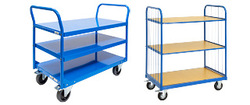

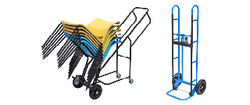


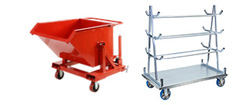
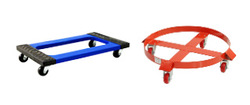
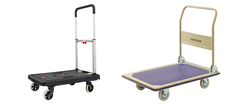
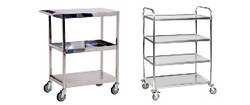

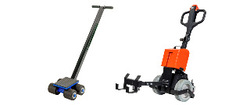
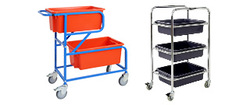
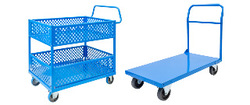
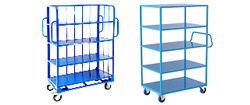
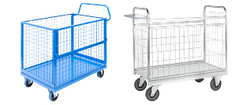
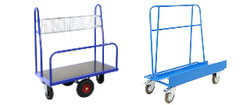
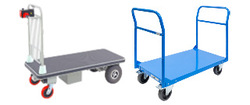
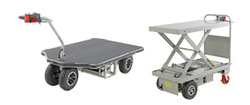
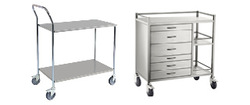
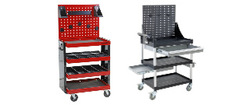
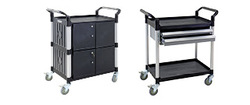
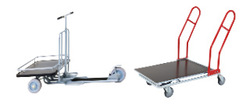
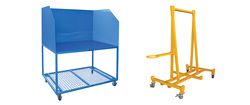



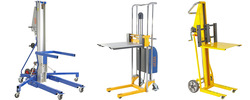



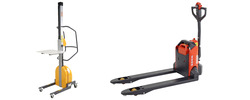
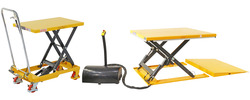
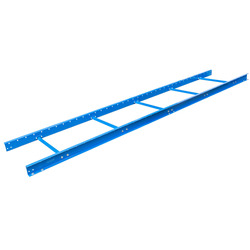
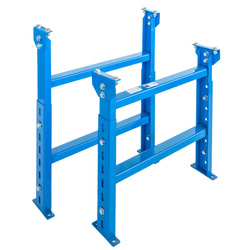

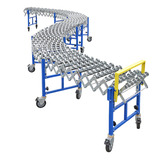



















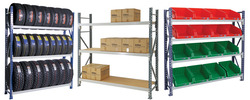
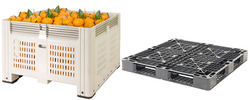
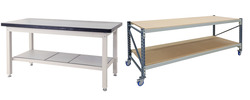
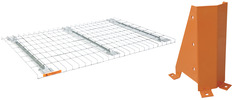
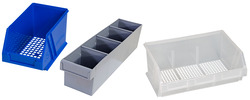



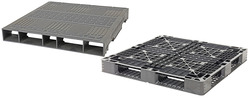

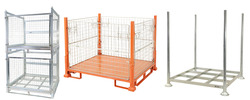

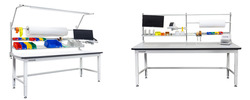


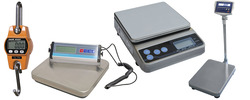



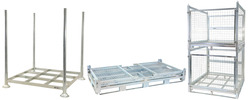
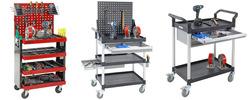
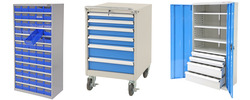

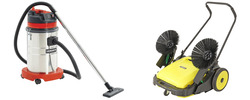











 Trolleys / Hand Trucks
Trolleys / Hand Trucks 2 Tier Trolleys
2 Tier Trolleys 3 Tier Trolleys
3 Tier Trolleys Aluminium Trolleys
Aluminium Trolleys Appliance & Hand Trucks
Appliance & Hand Trucks Cage Trolleys
Cage Trolleys Cleaning Carts & Trolleys
Cleaning Carts & Trolleys Construction Trolleys
Construction Trolleys Dollies
Dollies Foldable Trolleys
Foldable Trolleys Hospital Trolleys
Hospital Trolleys Laundry/Linen Trolleys
Laundry/Linen Trolleys Load Skates & Tow Tugs
Load Skates & Tow Tugs Mail / Office Trolleys
Mail / Office Trolleys Multi Purpose Trolleys
Multi Purpose Trolleys Multi-Tier Shelf Trolleys
Multi-Tier Shelf Trolleys Order Picking Trolleys
Order Picking Trolleys Panel Cart Trolleys
Panel Cart Trolleys Platform Trolleys
Platform Trolleys Powered Trolleys
Powered Trolleys Stainless Steel Trolleys
Stainless Steel Trolleys Tool Trolleys
Tool Trolleys Utility Carts
Utility Carts Warehouse Trolleys
Warehouse Trolleys Custom Trolleys
Custom Trolleys Lifting Equipment
Lifting Equipment Forklift Attachments
Forklift Attachments Jib Attachments
Jib Attachments Lifting Hoists & Pallet Hooks
Lifting Hoists & Pallet Hooks Manual Stackers & Lifters
Manual Stackers & Lifters Pallet Jacks
Pallet Jacks Pallet Lifters
Pallet Lifters Pallet Rotators & Dispenser
Pallet Rotators & Dispenser Powered Pallet Trucks & Electric Lifters
Powered Pallet Trucks & Electric Lifters Scissor Lift Trolleys and Tables
Scissor Lift Trolleys and Tables Conveyor Equipment
Conveyor Equipment Conveyor Frames
Conveyor Frames Conveyor Stands
Conveyor Stands Roller Conveyors
Roller Conveyors Skate Wheel Conveyors
Skate Wheel Conveyors Access Equipment
Access Equipment Container & Yard Ramps
Container & Yard Ramps Step Stools & Ladders
Step Stools & Ladders Work Platforms & Crane Cages
Work Platforms & Crane Cages Drum Handling
Drum Handling Drum Storage & Bunding
Drum Storage & Bunding Drum Trolleys & Lifters
Drum Trolleys & Lifters Forklift Drum Handling
Forklift Drum Handling Containment & Spillage
Containment & Spillage Aerosol Cans Storage Cages
Aerosol Cans Storage Cages Bunded Pallets & Storage
Bunded Pallets & Storage Corrosive Goods Storage Cabinets
Corrosive Goods Storage Cabinets Flammable Liquid Cabinets
Flammable Liquid Cabinets Forklift Gas Storage Cages
Forklift Gas Storage Cages Gas Cylinder Storage
Gas Cylinder Storage Site Storage
Site Storage Spill Kits
Spill Kits Stillage Cages
Stillage Cages Waste Handling
Waste Handling Bin Lifters & Tippers
Bin Lifters & Tippers Plastic Waste Bins and Carts
Plastic Waste Bins and Carts Steel Waste and Tipping Bins
Steel Waste and Tipping Bins Storage Equipment
Storage Equipment Heavy Duty Cabinets & Benches
Heavy Duty Cabinets & Benches Heavy Duty Shelving
Heavy Duty Shelving Mega Bins & Pallets
Mega Bins & Pallets Packing Benches
Packing Benches Pallet Racking Accessories
Pallet Racking Accessories Parts Trays & Stor-Pak Bins
Parts Trays & Stor-Pak Bins Pegboard & Louvre Panels
Pegboard & Louvre Panels Plastic Bins
Plastic Bins Plastic Handling Solutions Bins
Plastic Handling Solutions Bins Plastic Pallets
Plastic Pallets Stack & Nest Bins
Stack & Nest Bins Storage Cages
Storage Cages Workplace Equipment
Workplace Equipment Workbenches
Workbenches Modular Workbenches
Modular Workbenches Electric Height-Adjustable Workbenches
Electric Height-Adjustable Workbenches Floor Matting
Floor Matting Industrial Weighing Scales
Industrial Weighing Scales Pallet Wrapping & Packaging Machinery
Pallet Wrapping & Packaging Machinery Ramps
Ramps Stationery Cupboards
Stationery Cupboards Storage and Stillage Cages
Storage and Stillage Cages Tool Trolleys
Tool Trolleys Tooling Cabinets
Tooling Cabinets Wheelie Bins
Wheelie Bins Workshop Equipment
Workshop Equipment Safety Equipment
Safety Equipment Gloves and PPE
Gloves and PPE Pallet Rack Post Protectors
Pallet Rack Post Protectors Safety Barriers & Bollards
Safety Barriers & Bollards Safety Knives & Cutters
Safety Knives & Cutters Signs and Traffic Supplies
Signs and Traffic Supplies Tool & First Aid Boxes
Tool & First Aid Boxes Construction Equipment
Construction Equipment Concrete Equipment
Concrete Equipment General Site Equipment
General Site Equipment Lifting Equipment
Lifting Equipment Site Storage
Site Storage Waste
Waste 










